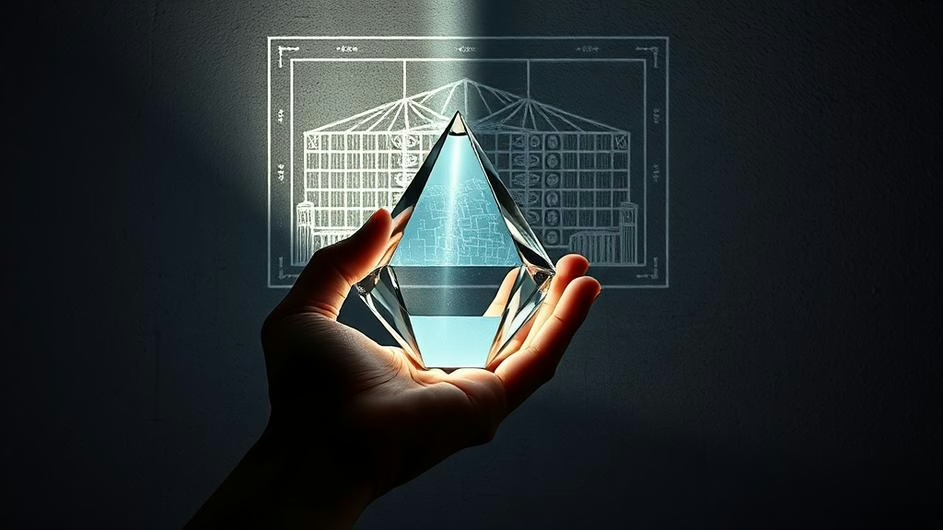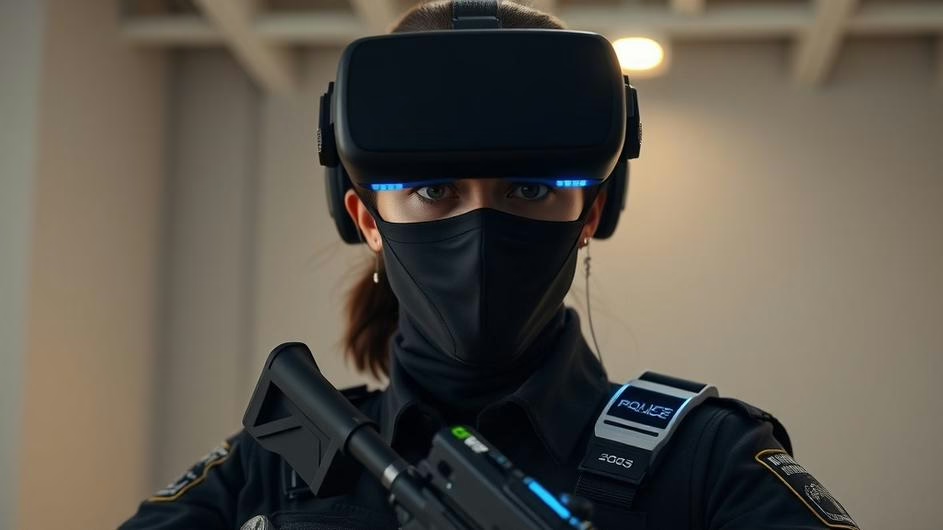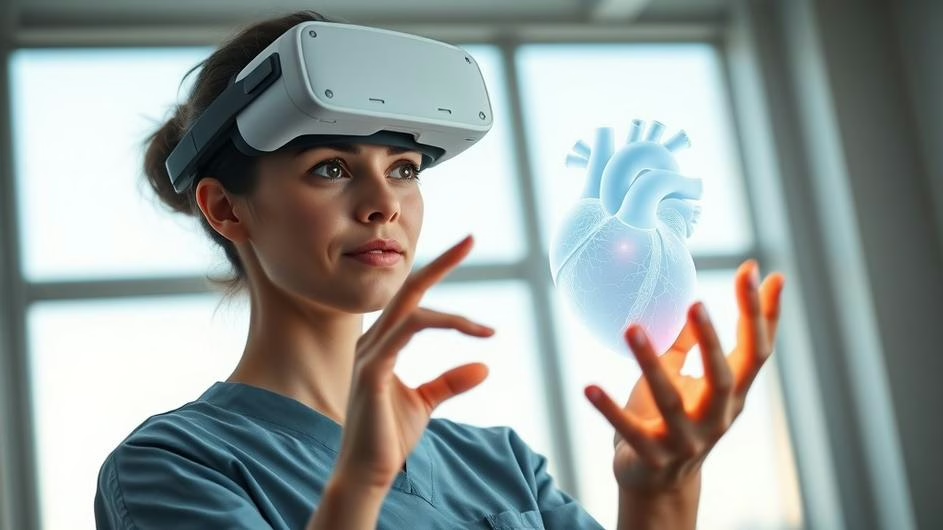
Augmented Reality: Redefining the Boundary Between Digital and Physical Worlds
Remember when Pokemon Go had millions of people chasing virtual creatures through real streets? That wasn’t just a gaming phenomenon. It was the moment augmented reality went mainstream, proving that blending digital content with physical spaces could capture global attention and real money. Today, AR has evolved far beyond mobile games into a technology that’s reshaping industries, creating new investment opportunities, and challenging how we think about digital interaction.
What makes AR different from its cousin virtual reality? While VR gaming transports you to entirely digital worlds, augmented reality keeps you grounded in reality while layering interactive digital elements on top. Think of it as adding a smart interface to the physical world rather than escaping to a virtual one.
The Tech Stack Behind AR’s Rise
AR systems work by combining several key technologies that have finally matured enough for widespread deployment. Modern smartphones pack the essential components: cameras for environmental mapping, accelerometers and gyroscopes for motion tracking, and processors powerful enough to render graphics in real time. But the real magic happens in the software layer, where computer vision algorithms analyze your surroundings and decide where to place digital objects.
Two main approaches dominate the field. Marker-based AR relies on visual triggers like QR codes or specially designed symbols that cameras can recognize instantly. It’s reliable but limits where AR experiences can happen. Markerless AR represents the bigger opportunity, using advanced image recognition and spatial mapping to understand any environment. This is where the serious investment dollars are flowing.
Why does this matter for developers and investors? The shift from marker-based to markerless AR mirrors broader tech trends we’ve seen before. Just as mobile apps evolved from simple utilities to complex platforms, AR is moving from novelty experiences to essential business tools.
Market Forces Driving AR Adoption
The numbers tell an interesting story. While crypto markets grab headlines with their volatility, AR’s growth follows a more predictable enterprise adoption curve. Retailers use AR to reduce return rates by letting customers visualize products in their homes before purchasing. Industrial companies deploy AR-guided maintenance systems that cut training time and reduce errors. Even the financial sector is experimenting with AR interfaces for trading platforms and cryptocurrency visualization.
But here’s where it gets really interesting for the tech community. AR development increasingly relies on the same infrastructure powering other emerging technologies. Edge computing reduces latency for real-time rendering. AI algorithms improve object recognition and environmental understanding. Even blockchain technology finds applications in AR through NFT-based virtual assets and decentralized content distribution.
Beyond the Hype: Real-World Applications
Let’s cut through the marketing speak and look at what’s actually working. In manufacturing, companies like Boeing use AR headsets to overlay assembly instructions directly onto aircraft components. This isn’t just cool tech; it’s measurably faster and more accurate than traditional paper manuals. Medical students practice procedures on virtual patients superimposed over real anatomy models. Architects walk clients through buildings that exist only as digital models.
The retail applications deserve special attention because they’re driving consumer adoption. Furniture companies report that AR visualization tools significantly reduce returns and increase customer satisfaction. Beauty brands let customers try products virtually, creating engagement metrics that traditional e-commerce can’t match.
What’s the connection to blockchain and crypto? Some of the most innovative AR experiences now incorporate digital ownership through NFTs. Virtual art galleries let users display their NFT collections in physical spaces. Gaming platforms are building economies where AR-captured virtual items have real market value.

The Mixed Reality Evolution
Industry terminology keeps evolving, but mixed reality (MR) represents AR’s next phase. Instead of simply overlaying static information, MR applications create truly interactive experiences where virtual and physical objects influence each other. Drop a virtual ball, and it bounces off real furniture. Place a holographic screen, and it responds to gestures and voice commands.
This evolution parallels what we’ve seen in other tech sectors. Just as cloud computing evolved from simple storage to complex orchestration platforms, AR is moving from passive visualization to active interaction. The implications for developers are significant. MR applications require new programming paradigms, different user interface concepts, and integration with IoT devices and smart home systems.
Investment Landscape and Market Dynamics
Following the money reveals interesting patterns. While consumer AR gets attention through social media filters and gaming, enterprise AR attracts bigger investments. Training simulations, remote assistance, and industrial maintenance represent markets worth billions, not millions. This creates opportunities for developers who can build B2B solutions rather than chasing viral consumer apps.
The hardware landscape is consolidating around a few key players, but software remains wide open. Apple’s ARKit and Google’s ARCore have established mobile AR standards, but specialized headsets from Microsoft, Magic Leap, and emerging competitors are creating new possibilities. For investors, this fragmentation means opportunity, but also risk.
Regulatory considerations are emerging too. Privacy concerns around camera-based tracking mirror issues we’ve seen with social media and data collection. As AR becomes more pervasive, expect regulatory frameworks similar to what’s developing around AI and cryptocurrency.
Technical Challenges and Opportunities
Let’s be realistic about the limitations. Current AR experiences often feel gimmicky because the technology isn’t quite seamless yet. Battery life remains a constraint for mobile AR. Network latency affects real-time rendering. User interfaces need refinement for mass adoption.
But these challenges create opportunities for technical innovation. Edge computing solutions are emerging to handle AR processing closer to users. Improved sensors and displays are making headsets lighter and more comfortable. Machine learning algorithms are getting better at understanding complex environments.
The convergence with other emerging technologies is particularly interesting. 5G networks enable more sophisticated cloud-based AR. AI improves object recognition and natural interaction. Blockchain technology could enable decentralized AR content networks where creators maintain ownership and control.
Looking Forward: What’s Next for AR?
Predicting technology adoption is tricky, but several trends seem clear. Consumer AR will likely remain dominated by mobile devices for the next few years, with gradual adoption of lightweight smart glasses. Enterprise AR will continue growing in specific verticals where the ROI is obvious: manufacturing, healthcare, education, and field services.
The real transformation might come from unexpected directions. Just as smartphones enabled apps we couldn’t imagine before, ubiquitous AR could create entirely new categories of digital interaction. Spatial computing could replace traditional user interfaces. Physical locations could become programmable through persistent AR content.
For the crypto and blockchain community, AR represents both opportunity and challenge. Virtual assets need new ways to interact with physical spaces. Decentralized content networks could reshape how AR experiences are created and distributed. The metaverse concepts that drive much crypto speculation might actually manifest through AR rather than VR.
The technology is real, the applications are proven, and the market forces are aligning. Whether you’re developing applications, making investments, or setting policy, augmented reality deserves serious attention. It’s not just about overlaying digital content on physical spaces. It’s about fundamentally changing how we interact with information, each other, and the world around us.
Sources
- “Augmented reality”, Wikipedia, last edited 2024
- “What is Augmented Reality?”, IBM, accessed 2024
- “Augmented Reality (AR): Definition, Examples, and Uses”, Investopedia, accessed 2024
- “What is Augmented Reality (AR)?”, The Interaction Design Foundation, accessed 2024
- “What Is Augmented Reality?”, The Franklin Institute, accessed 2024





























































































